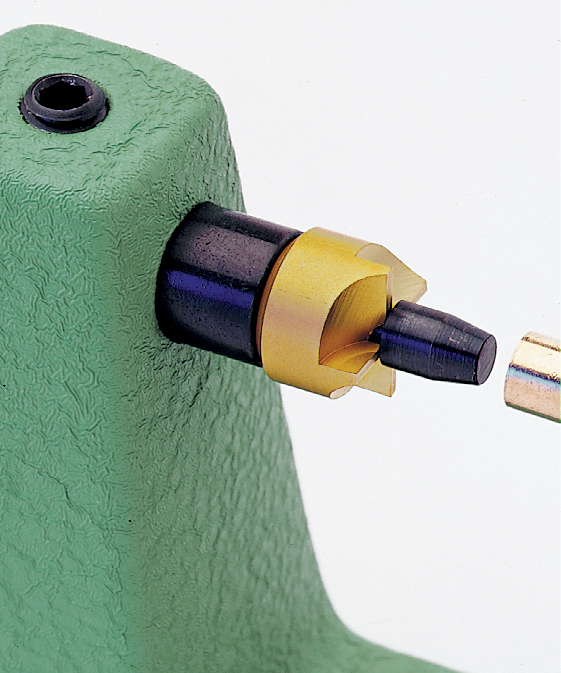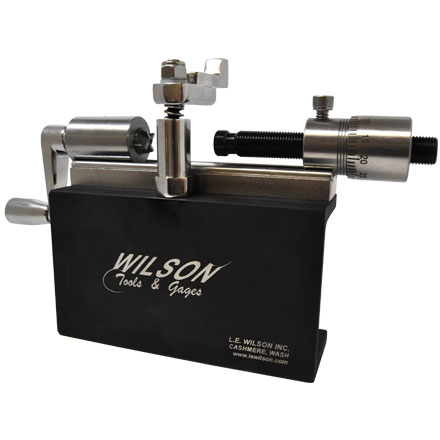Choosing the right case trimmer has to do with the quest for precision, the need for speed, and the budget bottom line… Here’s how to make the fewest compromises.
Glen Zediker
Last time we talked about the needs and reasons for trimming bottleneck rifle cartridges. It’s a necessary step in the case preparation process, at least at some point or three before the brass hits the trash can bottom.
MANUAL
Case trimmers are available from most all industry tooling manufacturers. Most replicate a miniature lathe: the case is held in place at its back end, usually by a collet-type appliance, and suspended from its front end via a pilot, surrounded by a cutting head, that fits inside the case neck. They have a crank-handle.

This essential architectural arrangement carries potential contributors to imprecision. The case body is not supported, only the case head is held firmly in place. The pilot goes in the case neck and, so it can go into the case neck, has some gap. Inconsistencies in case neck wall thickness and the inevitable case body warpage, plus plain old flex, can result in what some, me included, might call wobble.
If the case isn’t being rotated along a flat axis, then the cutter isn’t going to engage the case mouth squarely.
I think a better arrangement is taking the case head out of the equation and focusing on supporting the case body. To this end, I’m not bashful about saying something good about something I use, especially not when post-recommendation feedback continues to thank me profusely. Put it this way: if you asked me face-to-face which bench-top case trimmer to get, I’d say “LE Wilson.” Just like that. Check it out at Midsouth Shooters Supply HERE.


I like this design because it uses a sleeve that holds the case and sits atop rails on the trimmer base. The case can’t move, and it doesn’t move. The cutter, which is the only thing that moves, engages the case mouth. All the alignment is in the parts of the trimmer itself; the case is taken completely out of the equation.


POWER
Yeah boy. If you’re up for it, a truly specialty power case trimmer is the bomb.com. I really don’t think that adding power to a “lathe-type” trimmer is all that impressive or worthwhile. It helps ease the effort but it’s not necessarily speeding up the process.
There are two power trimmers that are more than impressive. One is a Gracey Match-Prep and the other is the Giraud. Both are expensive ($300+) but after processing a sack full of Lake City Match brass in a scant few minutes, the cost might get forgotten. Might. It really depends on the volume you do. I can tell you that, much to the contrary using a conventional tool, case trimming is the single fastest step in my case prep routine using a Gracey. I have not used a Giraud but have it on very good advice that it’s as good as all.

Both work pretty much like giant overly-powerful electric pencil sharpeners. Push the case in and the spinning cutting head zips it flat in a heartbeat. Case length is determined by cartridge case headspace, which is to say that the case stops within the trimmer holder on the case shoulder. Clearly: trim only full-length sized cases to get consistent lengths. If the case shoulders haven’t been set back or at least all set the same, lengths will vary.
Take a look-see: Gracey, Giraud

Click here to see all the Midsouth Shooters Supply case trimming options.
Next time we’ll look at tools used to treat the trimmed case necks and finish this task in fine style.
The preceding is a specially-adapted excerpt from Glen Zediker’s newest book Top-Grade Ammo. Available right’chere at Midsouth Shooters Supply. Visit ZedikerPublishing.com for more information on the book itself, as well as others.








